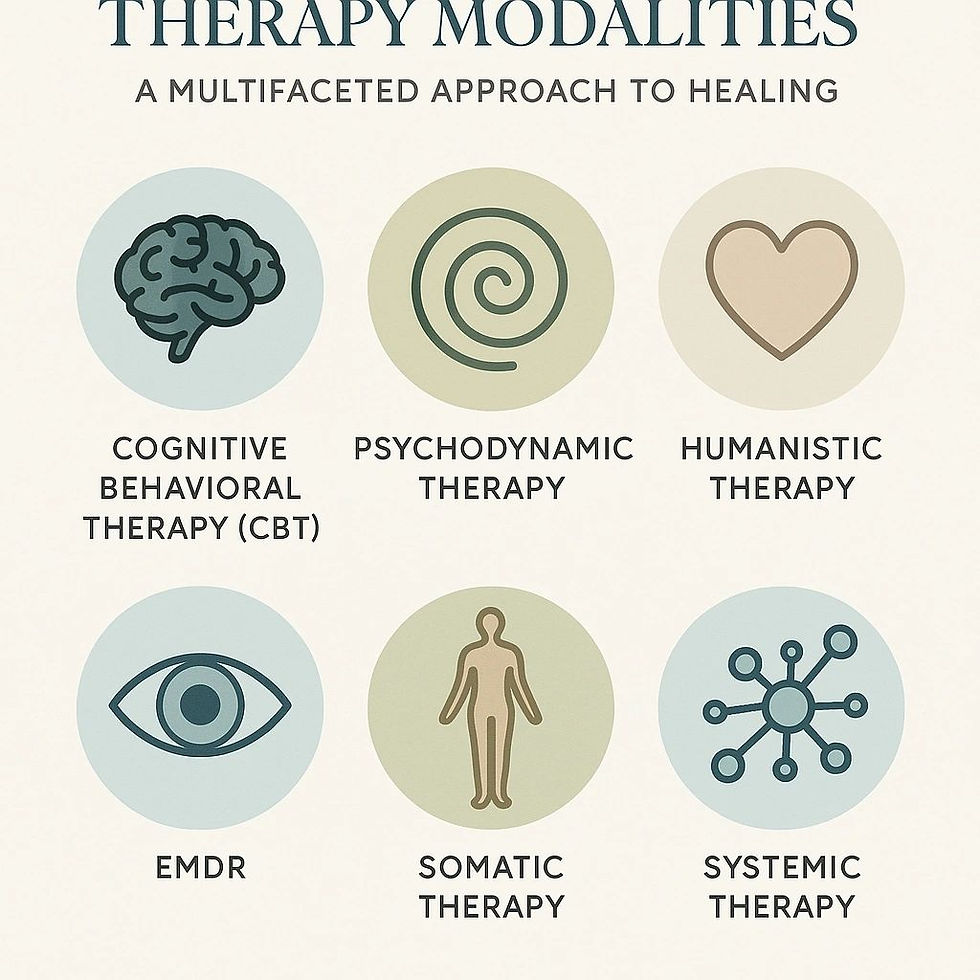Tools to Help with Emotional Regulation
- Allison McCue-Napoli
- Feb 17
- 2 min read

Emotional regulation is the ability to manage and respond to emotional experiences healthily. Whether you're dealing with stress, anxiety, frustration, or even excitement, having tools to regulate emotions can make a big difference in your mental well-being. Here are some practical tools and techniques to help with emotional regulation:
1. Mindfulness and Meditation
Practicing mindfulness helps you become more aware of your emotions without reacting impulsively. Meditation, deep breathing exercises, and body scans can help regulate emotions by promoting relaxation and self-awareness.
2. Journaling
Writing down your thoughts and feelings can help process emotions and identify patterns. Gratitude journaling, mood tracking, or free writing can provide clarity and insight into emotional triggers.
3. Cognitive Reframing
This technique involves changing how you perceive a situation. Instead of seeing a challenge as a failure, view it as a learning opportunity. Reframing negative thoughts can help reduce emotional distress.
4. Sensory Regulation Tools
Engaging the senses can help regulate emotions. Examples include:
Stress balls or fidget tools
Aromatherapy (lavender for calmness, peppermint for alertness)
Listening to calming music
Taking a warm bath or using weighted blankets
5. Physical Activity
Exercise releases endorphins, which help boost mood and reduce stress. Activities like yoga, dancing, walking, or even stretching can help regulate emotions by providing an outlet for pent-up energy.
6. Grounding Techniques
Grounding helps bring your focus to the present moment, reducing overwhelming emotions. The 5-4-3-2-1 technique is effective:
5 things you can see
4 things you can touch
3 things you can hear
2 things you can smell
1 thing you can taste
7. Breathing Exercises
Controlled breathing can calm the nervous system and help with emotional regulation. Try:
Box breathing (Inhale for 4 seconds, hold for 4, exhale for 4, hold for 4)
4-7-8 breathing (Inhale for 4 seconds, hold for 7, exhale for 8)
8. Emotional Regulation Apps
Several apps provide guided techniques to help regulate emotions, such as:
Calm (meditation and relaxation)
Headspace (mindfulness training)
Moodfit (mood tracking and self-care tools)
DBT Coach (Dialectical Behavior Therapy strategies for emotional regulation)
9. Social Support
Talking to a trusted friend, family member, therapist, or support group can help process emotions. Expressing feelings in a safe space can reduce stress and provide perspective.
10. Self-Compassion Practices
Being kind to yourself during difficult times can help regulate emotions. Positive affirmations, self-care, and allowing yourself to feel without judgment can promote emotional resilience.
Emotional regulation takes practice, and different tools work for other people. Experiment with these techniques to find what works best for you. By building a toolkit of healthy coping strategies, you can navigate emotions with greater ease and balance.








Comments